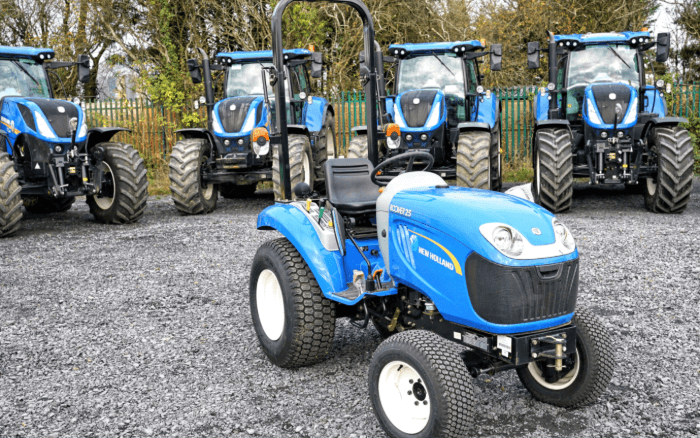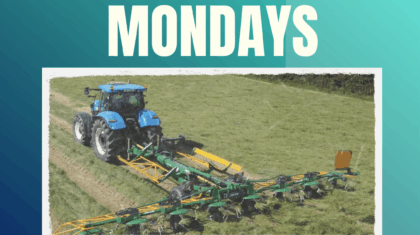The tractor registration statistics issued by the Farm Tractor and Machinery Trade Association (FTMTA) are always of interest when trying to gauge the sentiment of the market.
The most recent figures available – for November – were released just before Christmas and with them comes confirmation that 2021 was a good year, overall.
Total sales for the first 11 months of the year were 2,345, up from 1,884 in the previous year, and well above the three-year average of 1,934.

With 461 more new tractors being registered by the end of November 2021 than in the same period in 2020, dealers are, no doubt, reassured by the fact that the trade was selling an extra 38 tractors per month in 2021.
Used tractors also showed a return to more normal levels with 269 units sold in November against an average of 289 for the three years prior to 2021.
This average is distorted somewhat by the bumper year of 2020 when 401 used tractors were sold.
FTMTA figures provide valid comparison
December usually sees only a handful of tractors sold, so, as 2022 begins, a comparison can still be made of tractor sales between the 26 counties even though the final figures for the year are not yet known.

However, total sales figures for each county are not a particularly meaningful comparison.
The metric does not take into account the size of the county, although it may be assumed that the bigger it is the more sales are made, but this may not hold true upon closer analysis.
A more valid comparison would be between how many tractors were sold, per land area unit, in this case per square kilometre (km2), or 100ha.
Tractor sales density
The table below shows the density of new tractors in each county.
It was derived by dividing the area of the county (km2) by the number of tractors sold up until November 2021, according to the FTMTA.
The lower the number the greater the apparent prosperity of that county.
| County (by size) | Km2 per new tractor |
| Cork | 25.5 |
| Galway | 52.5 |
| Mayo | 48.2 |
| Donegal | 71 |
| Kerry | 50 |
| Tipperary | 22.5 |
| Clare | 35.2 |
| Limerick | 26.7 |
| Roscommon | 29.6 |
| Wexford | 14.8 |
| Meath | 22.1 |
| Kilkenny | 21.6 |
| Wicklow | 38.2 |
| Offaly | 29.4 |
| Cavan | 28.7 |
| Waterford | 27.7 |
| Westmeath | 26.6 |
| Sligo | 43.8 |
| Laois | 22.6 |
| Kildare | 24.2 |
| Leitrim | 66.3 |
| Monaghan | 25.3 |
| Longford | 40.4 |
| Dublin | 11.4 |
| Carlow | 21.8 |
| Louth | 15.6 |
| All Ireland average | 30 |
Dublin, which is hardly the most rural of counties, comes in way ahead of the pack with one new tractor for every 11.4km2.
This is probably a reflection of utility sales and smaller estate-maintenance machines. Intensive vegetable farming also demands larger tractor fleets.

Another county that scored well is Wexford with 159 tractor sales. Kilkenny was also another happy hunting ground for dealers, as was Louth.
At the other end of the scale comes Donegal with one new tractor every 71km2. A quick look at the topography might help explain this, as would a comparison of farm size.
Leitrim has a large expanse of Forestry which no doubt helps explain its position just behind Donegal.
A similar county in its geography to Donegal is Galway and that too has a low density of new tractors coming in 24th while Kerry, Sligo and Longford follow shortly after.
The year ahead
Most manufacturers remain bullish about prospects for 2022 although there is the general expectation that the number of sales will not be sustained in the long term.
One of the main drivers of this optimism is the strong prospects for wheat prices over the next year, although the forecasts for milk are a little less enthusiastic, but some small growth is still expected, especially in the first half of 2022.
The electronic chip shortage shows little sign of abating any time time soon, which will continue to affect production, however, demand for steel and, hence, its price, is expected to peak or even start to decline during the year ahead.





